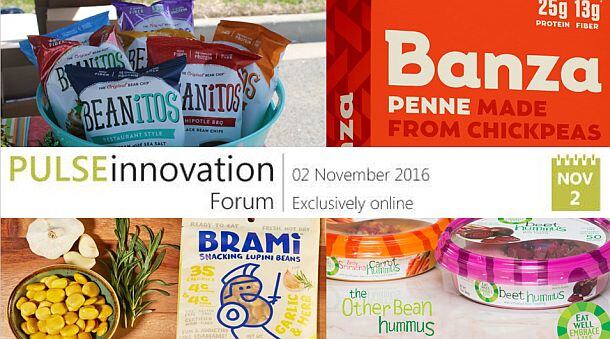This year, as it has been for many years, Canada’s place as the top producer of pulses (peas, beans, lentils, and chickpeas) remained untouched. “Around 35% of world exports come from Canada for pulses, and [it's] the largest producer of peas and lentils in the world,” Jackie Tenuta, director of marketing development at Pulse Canada told FoodNavigator-USA.
Speaking numbers, in 2015 there were about 2.5 million metric tons of pulses grown in the US, while its northern neighbour had 5.9 million metric tons.
“In both countries, the production is expected to increase this year, we won’t have exact numbers until the fall but there were definitely more acres planted this spring than last year,” she said, adding that pulse production has continued to increase over the past two decades.
Processed foods and the plant-based trend
Beans dominate the US market for pulses (around 75% of pulse consumption), which Tenuta attributed to the large Mexican population and popularity of Mexican or Tex-Mex food, where beans are crucial. In Canada, beans make up only 45% of consumption, while the remaining 55% is made out of other pulse types.
Lentils and chickpeas win for the fastest growing by volume in the US, and Tenuta said its primarily because of pulse inclusion into processed foods such as snacks or pasta. In fact, growth for pulse inclusion in a finished, packaged snack far outpaced other uses such as in soups, dips, or eaten as is.
“For snack food and the pasta category, growth rates are anywhere between 10% to 26%,” she said, citing Euromonitor data from 2010-2015. “From the majority cases for the end categories we’ve looked at, the growth rate for pulse inclusion are higher than the overall growth rate for that product category.”
Pulse Canada said that this means pulses are on trend and meet consumer interest. “I think there’s a number of reasons—we’ve noticed that food companies are looking for some different sources of protein to showcase in their products, like plant-based proteins. So there’s been an interest to look at different options out there.”
Year of pulses
Snack products that feature beans really have flooded the CPG space, from chips to snack on, to various pastas, to a refried bean alternative packed similar to yogurt cups, to just plain, toasted, salted chickpeas in a resealable bag.
“There are really so many uses for pulses, it’s such a flexible ingredient,” Tenuta said. In fact, the United Nation’s Food and Agriculture Organization (FAO) declared 2016 as “The International year of Pulses,” because of the “role pulses play around the globe in food security, health and nutrition, and environmental sustainability,” Tenuta added.
Pulse Canada will be at the upcoming IFT Show in Chicago, IL, in July, where they’ll showcase the top seven different product innovations using pulses by student teams from around the world, Canada, Australia, Uganda, UK, India, and two US teams. From Canada alone, there were 42 student team submissions from 17 schools across Canada in a competition held last winter. The event will take place Tuesday, July 19 from 11:00 - 12:30 at the IFT EXPO, Cooking Up Science booth.

Where next for beans, peas, chickpeas and lentils?
Register for our FREE, online 60-minute Pulse Innovation Forum on November 2, featuring Brami (lupini beans), Beanitos (bean snacks), Eat Well Embrace Life ('other bean hummus'), Pulse Canada, and Banza (chickpea pasta).
